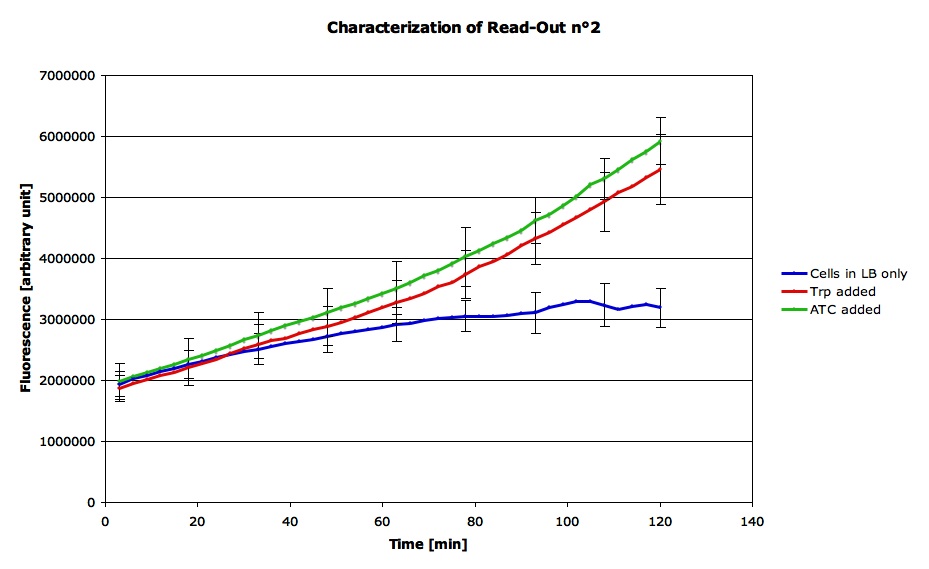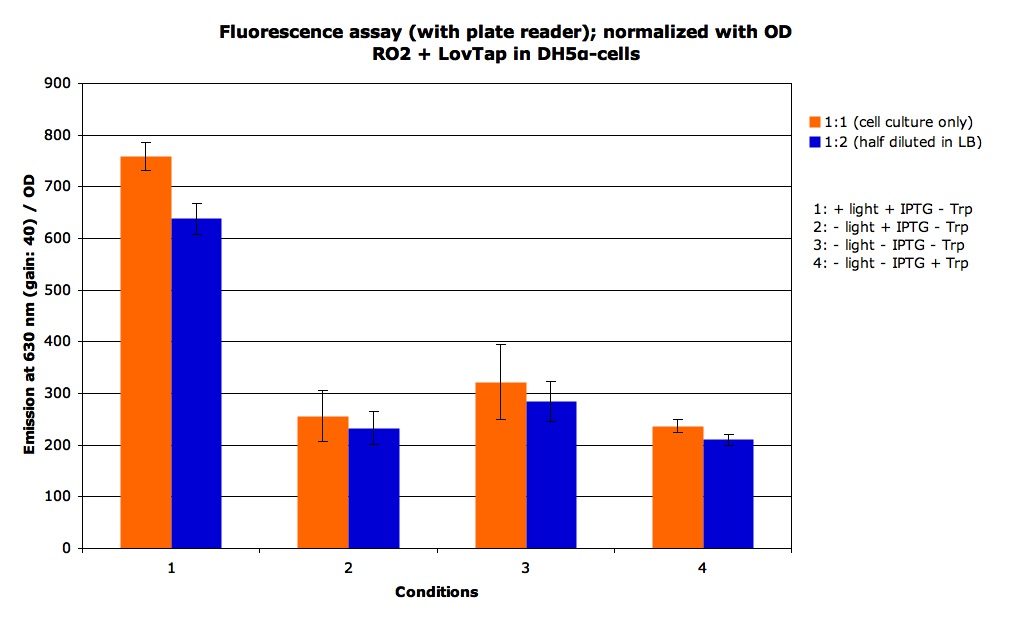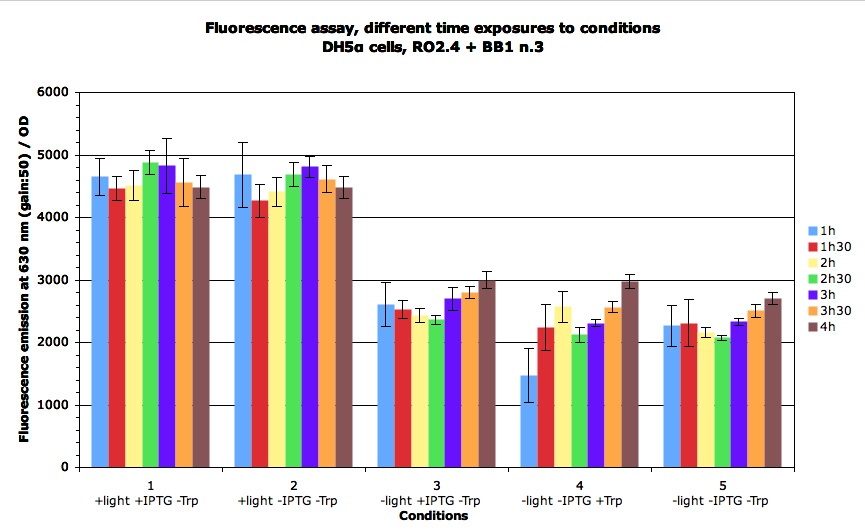Team:EPF-Lausanne/LOVTAP Results
From 2009.igem.org
Contents |
Parts
The biobrick parts (inducible LovTAP, RO1 and RO2) have been produced. We are currently sequencing them to confirm that there are no errors in the insert. You can have more information about these parts here
Characterization of RO1 and RO2
Prior to characterizing the LovTAP, we had to check if our Read out systems were indeed responsive at the Trp op site and that we could use them to further characterize our LovTAP. We characterized RO1 and RO2 by cultivating cells containing one of the read-out systems under different conditions :
- With TRP
- With ATC
- With both
- Without anything
And at different concentrations.
We had some troubles with the media, as we usually cultivated the cells in LB, but it contains Trp, and so it pertubated the results. Therefore we had to find a medium in which there was no Trp but on which cells could grow. We did a lot of different tests and we finally settled on a medium containing M9/minimal, amino acids and thiamine. At the beginning we also compared the results between growth on LB or M9 to see the difference.
Here are the final graphics that characterize our two read-out systems. More details can be found in the notebook section.
For RO1 :
So we can see that there is a decrease in RFP expression when TRP is added. Therefore, we can admit that our Trp op is functional. We considered the characterization for this part done.
For RO2 :
This experiment was done in LB medium. All cells were normalized to an OD's of 0.2 before adding inducers which were put into the liquid culture just before the measurements. The concentration of Tryptophan was 0.9 mg/ml and the concentration of Anhydrous Tetracyclin was of 50 ug/ml.
Here are the result from the machine (qPCR). We did the average signal for each condition as we had 4 measurements for each state :
This confirms that our construct responds both to Trp and ATC and shows the characteristics we expected.Therefore, we can suppose that both the Trp op and the Tet op are functional and that we can use this part in order to see if the LovTAP is functional.
Characterization of the entire system
Now that we have characterized the read out systems, we were able to see if the LovTAP protein would show the same pattern of response when illuminated as when we added Trp to the medium.
We some static measurement of fluorescence. For the + light condition we exposed the cells to the light for 2 hours, we got the following results
Then we wanted to see the time course of the induction : when is the RFP expressed, how etc.
It appears that this actually happens during the first hour.
Mutations
We used two different mutations in our project.
First we used some E. coli strains that had their Trp promoter mutated.
Then we used some strains we modified to test the results we had in the modeling session.
 "
"





